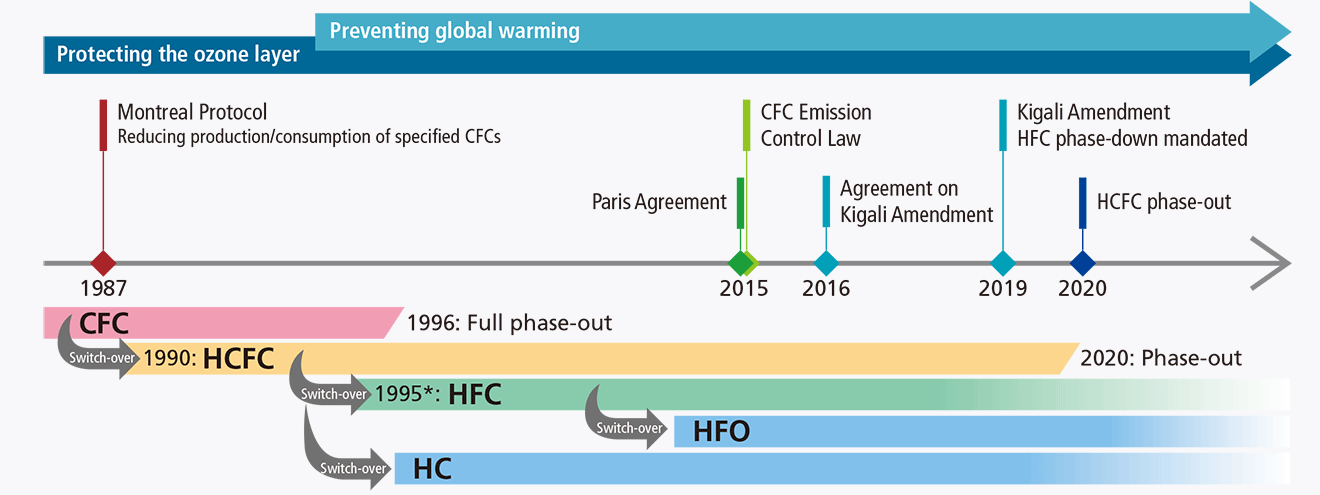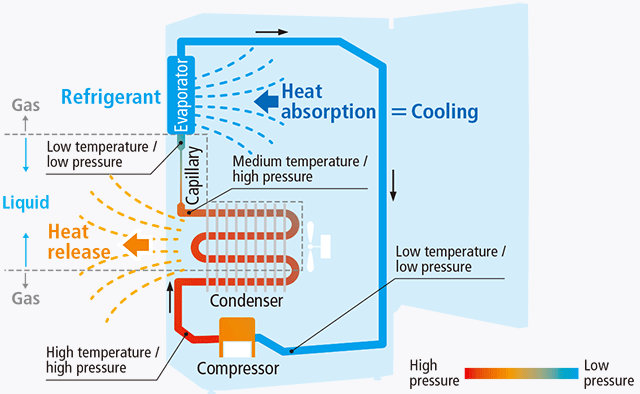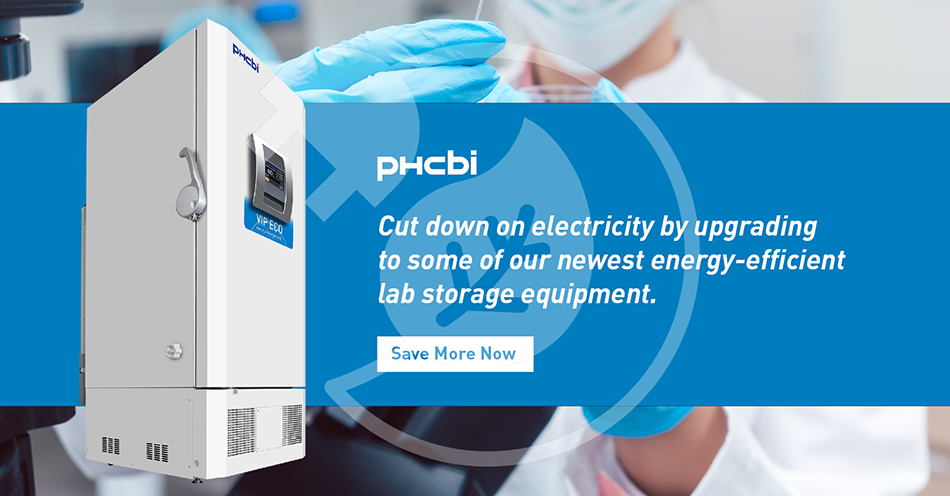What Are Next-Generation Refrigerants?
"What are next-generation refrigerants?" You may have heard of predominant halocarbons (CFC, HCFCs, and HFCs) that contribute to ozone depletion potential (ODP) and/or global warming potential (GWP) but combines excellent efficiency and safety at acceptable costs. In 2020, there is a move to restrict all new production of specified refrigerants such as HCFCs and the importation of these types of refrigerants because they deplete the ozone layer. In such case, lab equipment models produced up to and including 2020 may continue to use former refrigerants.
Since the implementation of the Montreal Protocol in 1987. From that year, all member states of the United Nations banned in stages the use of CFCs and HCFCs as they had the potential to cause a hole in the ozone layer. To resolve this globally, the laboratory freezer that uses certain refrigerants may no longer be allowed and a slow transition in using refrigerants such as HFCs, HFOs, and HCs will begin, replacing CFCs/HCFCs in stages overtime.
The impact of the world’s common refrigerants
 (Source: Values for 100 year global warming potential (GWP) from IPCC Fourth Assessment Report. Comparative 100 year GWP: HFC410A, 2,090; HFC32, 675.)
(Source: Values for 100 year global warming potential (GWP) from IPCC Fourth Assessment Report. Comparative 100 year GWP: HFC410A, 2,090; HFC32, 675.)
The Regulations on CFCs/HCFCs
The diagram below explains Japan’s transition to completely phase out CFC’s in favor of eco-friendly natural refrigerants that have low global warming potential.

The Impact of Using CFCs on the Ozone Hole
The ozone layer is a region of Earth’s stratosphere that absorbs ultraviolet radiation to protect the Earth’s surface from this harmful radiation. If old refrigerants made from CFCs reach the stratosphere, the strong ultraviolet radiation from the sun emits chlorine atoms, which react with oxygen atoms present in the ozone, to break down the ozone.
Chlorine monoxide generated through this process is an unstable substance, causing a chain reaction repeating the chlorine atom emissions and ozone decomposition.
As the decomposition progresses, excessive thinning of the ozone layer occurs.
Because this is similar to a hole developing in the ozone layer, it is often referred to as an “ozone hole” and has become a critical issue.
The Purpose of Refrigerants in Freezers and Refrigerators
The transition from a liquid to a gas requires energy. Changing a substance’s state causes an endothermic reaction to occur, and this absorbs heat from the surroundings to cool. Refrigerators and freezers operate with this mechanism. A refrigerant in a liquid state turns into gas, which absorbs heat to lower the temperature inside the refrigerator / freezer cabinet. The gas is then compressed to release heat, turning it back to its liquid state. This process cycle continues repeatedly.
The Cooling Mechanism

What Are Hydrocarbon HC Refrigerants?
Natural hydrocarbon (HC) refrigerants are natural, non-toxic refrigerants that have no ozone depleting properties and low global warming potential. Hydrocarbons are one of the most climate-friendly and cost-effective refrigerants to cool and freeze.
Increased Efficiency
Natural hydrocarbon refrigerants provide more efficient cooling due to their high latent heat of evaporation. As a result, smaller compressors can be used leading to greater energy efficiency. With exceptionally low global warming potential natural refrigerants are also better for the environment.
The efficiency of a freezer can be measured as a coefficient of performance (COP) which is a ratio of the cooling provided to the electrical energy consumed.
For example, PHCbi’s VIP ECO freezers have an extremely high COP. The efficiency of the Eco Line freezers is a result of the high latent heat of evaporation of the hydrocarbon refrigerants. This value relates to the amount of heat required to turn a liquid into a gas – essentially the energy needed to break the forces which bind the refrigerant molecules together in a liquid state. As a larger amount of heat energy is required to break the binding forces between hydrocarbon molecules, these refrigerants remove heat more efficiently from the freezer cabinet than if a traditional refrigerant was used.
Reduced Running Costs
The use of highly efficient hydrocarbon refrigerants results in reduced energy consumption and therefore lower running costs. With key equipment and instrumentation operating continuously laboratories are able to significantly reduce running costs by investing in energy efficient facilities. Panasonic designs and builds advanced preservation systems to deliver maximum cost efficiency while maintaining the reliability and performance necessary for reliable storage of valuable research and clinical samples.
Alongside a host of other energy saving features, the efficient cooling delivered by hydrocarbon refrigerants can allow smaller compressors to be used leading to significant reductions in energy use and running costs. In addition, more efficient refrigeration systems dissipate less heat to their surroundings reducing the requirement for air conditioning which can lead to further savings.
The Alternative Solution
The impact of refrigerants on the environment is still being debated in some countries. As such, it is important to monitor the enforcement schedule for regulations, and social trends for managing refrigerators and freezers. This includes planning to prepare for equipment failure or additional equipment installations. In the future, changeovers of refrigerants in case of equipment breakdowns can become costly. To avoid such situations, it may be necessary to plan regular purchasing for new equipment in a way to conform to social and industrial trends.
